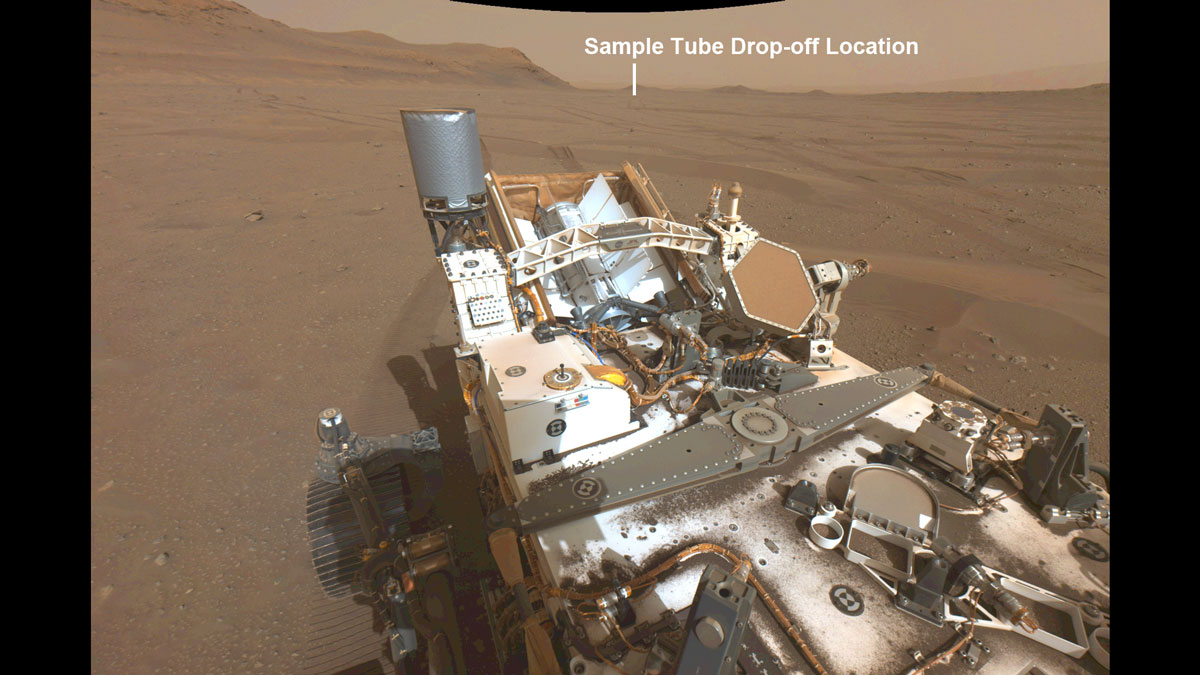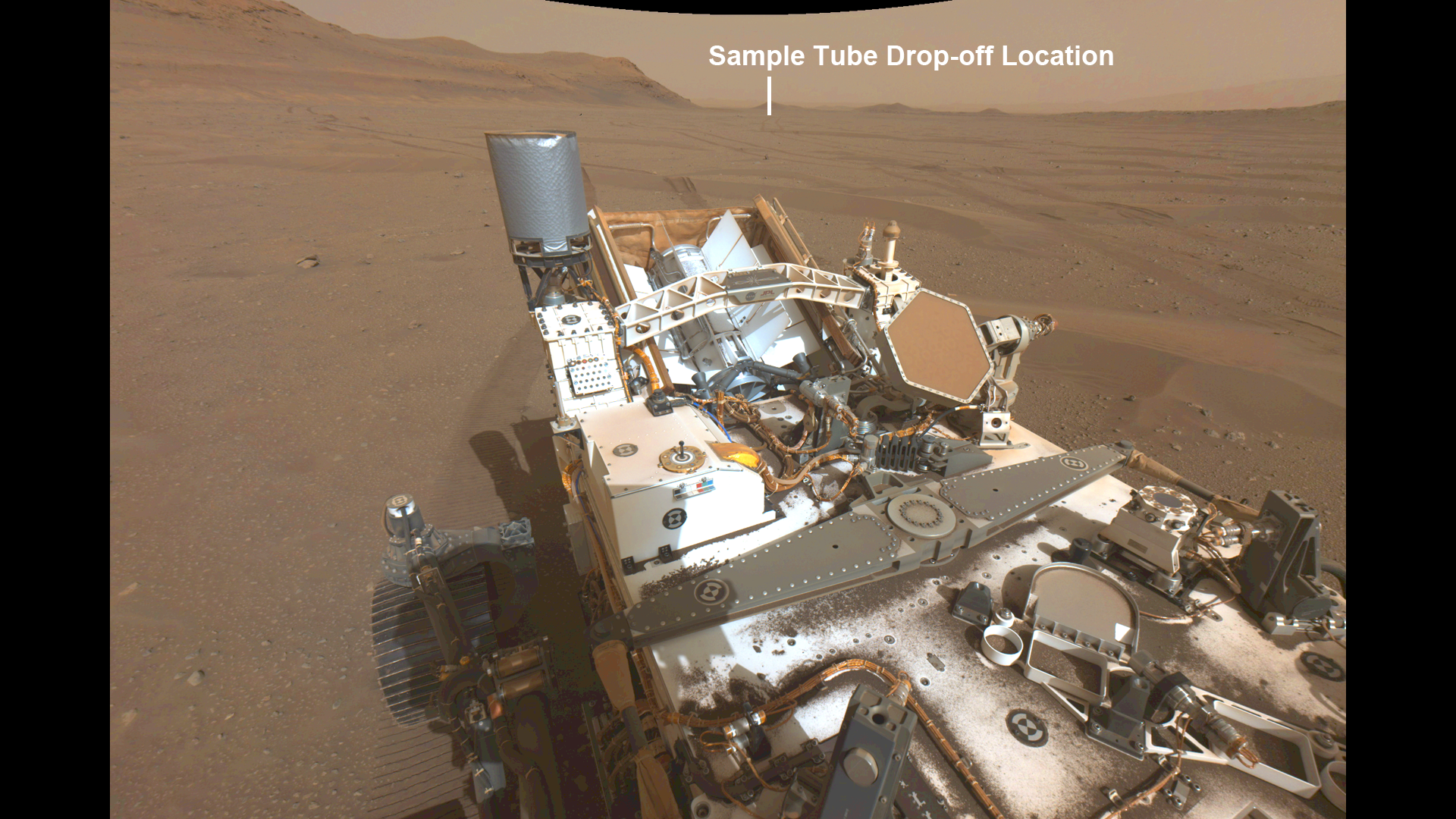Perseverance’s View of Possible Future Sample Cache Depot Site

| Credit | NASA/JPL-Caltech |
|---|---|
| Language |
|
This annotated image from NASA’s Perseverance Mars rover shows its wheel tracks in Jezero Crater and a distant view of the first potential location it could deposit a group of sample tubes for possible future return to Earth. The image was taken on Aug. 29, 2022, the 542nd Martian day, or sol, of the rover’s mission, by Perseverance’s navigation camera.
Sample tubes already filled with rock are currently stored in the rover’s Sampling and Caching System. Perseverance will deposit select samples in designated locations.
Subsequent NASA missions, in cooperation with ESA (European Space Agency), would collect these sealed samples from the surface and return them to Earth for in-depth analysis as part of the Mars Sample Return campaign.
This image has been linearized to remove optical lens distortion effects.
A key objective for Perseverance’s mission on Mars is astrobiology, including the search for signs of ancient microbial life. The rover will characterize the planet’s geology and past climate, pave the way for human exploration of the Red Planet, and be the first mission to collect and cache Martian rock and regolith (broken rock and dust).
The Mars 2020 Perseverance mission is part of NASA’s Moon to Mars exploration approach, which includes Artemis missions to the Moon that will help prepare for human exploration of the Red Planet.
NASA’s Jet Propulsion Laboratory, which is managed for the agency by Caltech in Pasadena, California, built and manages operations of the Perseverance rover.
For more about Perseverance: mars.nasa.gov/mars2020/
For more about Mars Sample Return: https://mars.nasa.gov/msr/

